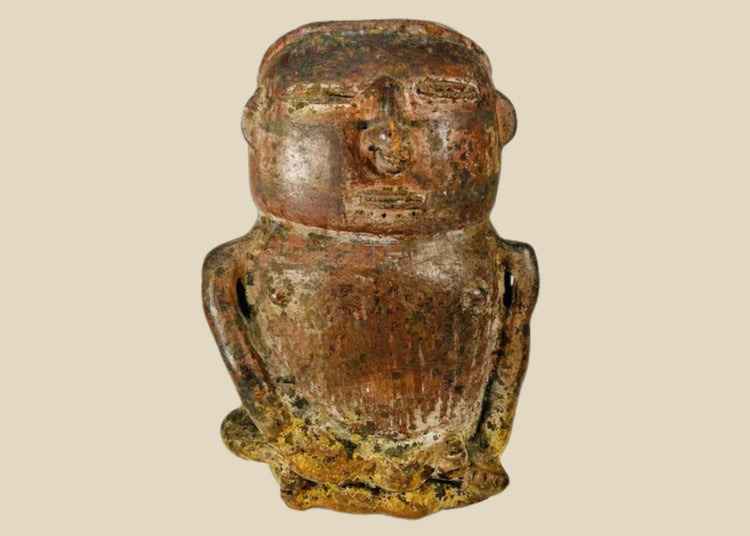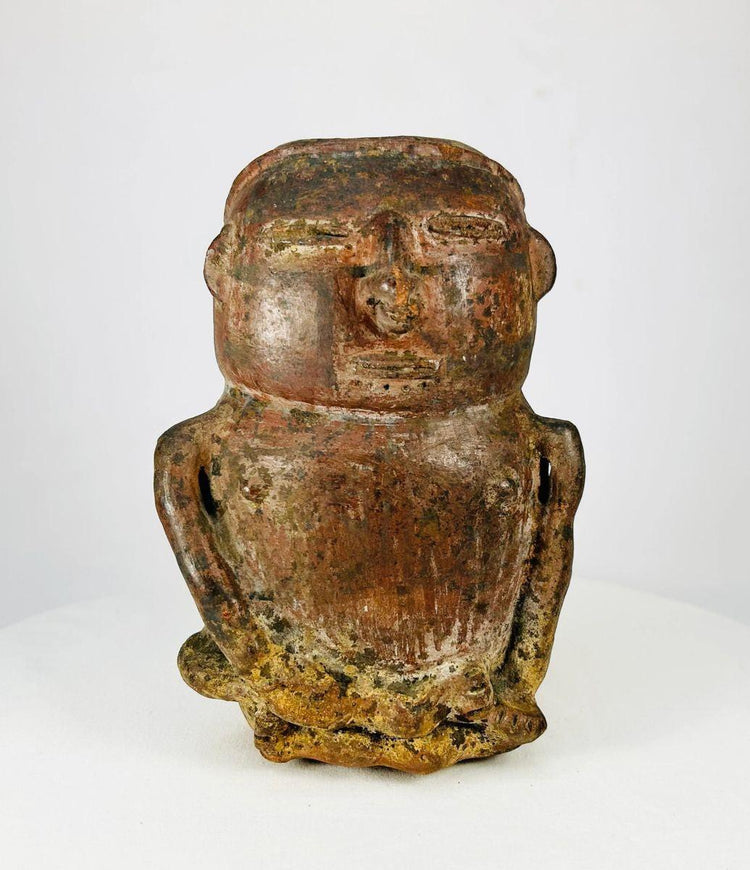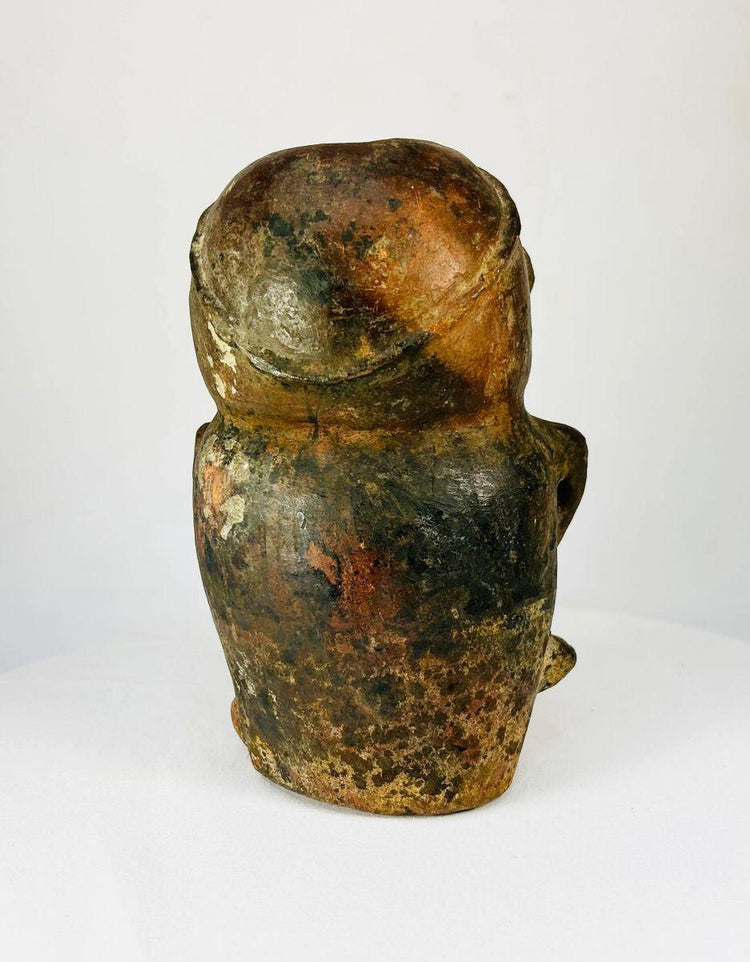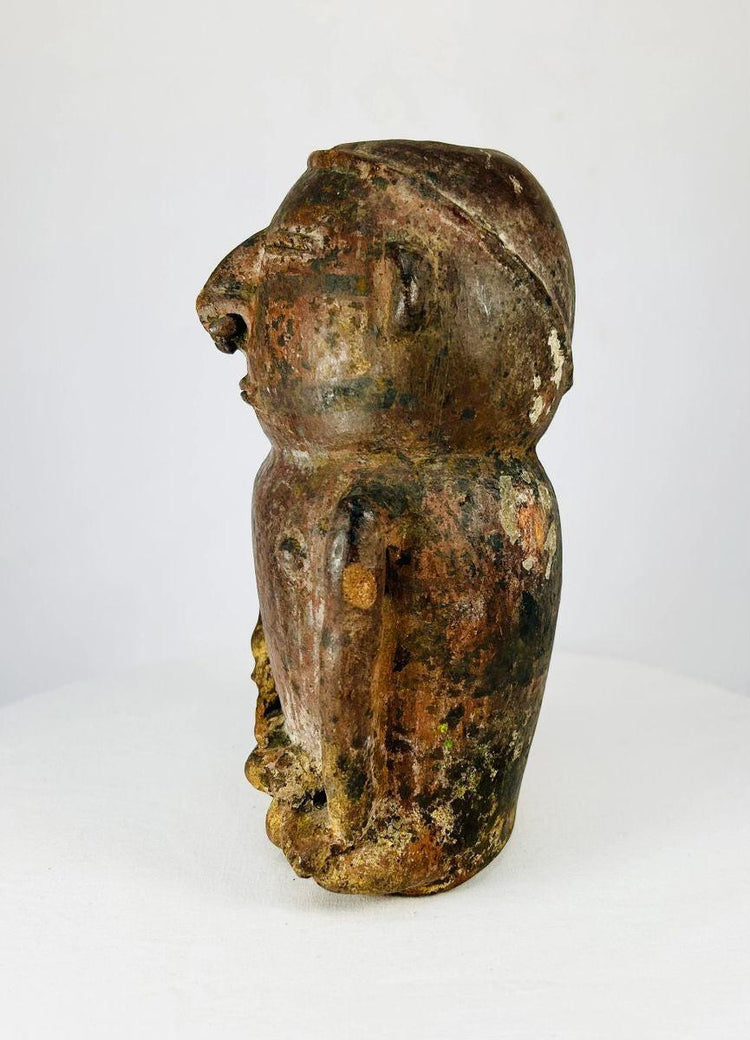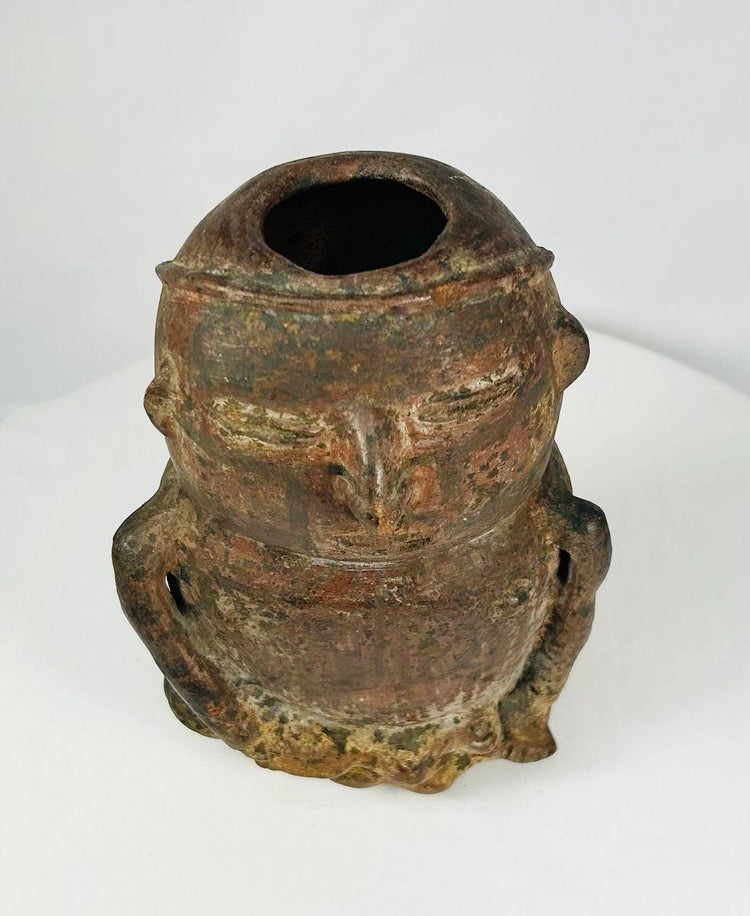Pre-Columbian Terracotta Effigy Vessel | Seated Human Figure | 500 BCE – 900 CE
Description
More
Less
Historical Context & Origin
Region: Mesoamerican or Andean region
Material: Terracotta
Period: Pre-Columbian, circa 500 BCE – 900 CE (estimated)
Description
This remarkable hand-crafted terracotta vessel takes the form of a seated human figure with finely molded anthropomorphic features, including a prominent nose and hands resting on the lap. The opening at the top of the head suggests its use as a container, likely for liquids, offerings, or ritual purposes. Such effigy vessels were central to ceremonial life, serving both as symbolic representations of ancestors, deities, or community figures, and as functional ritual containers.
Features
- Seated human figure with distinct anthropomorphic form
- Prominent molded facial features including nose and stylized hands
- Vessel opening at the top of the head for offerings or liquids
- Earthy terracotta tones with traces of weathering and mineral deposits
Cultural Significance
Effigy vessels like this were central to ritual and funerary practices in pre-Columbian societies. They were believed to bridge the spiritual and material worlds, carrying offerings to deities or serving as symbolic guardians in burial contexts. The human form highlights the deep connection between ritual objects, ancestor veneration, and spiritual belief systems within Mesoamerican and Andean traditions.
Condition
Well-preserved with weathering consistent with antiquity. Surface shows mineral deposits and natural wear, enhancing authenticity and emphasizing the vessel’s ceremonial use and age.
Dimensions (approximate)
Height: 7.25 in
Width: 5.25 in
Age
Pre-Columbian, circa 500 BCE – 900 CE (estimated)
Learn More
Explore the cultural meaning and artistry of ancient effigy vessels: Effigy Vessels: Faces and Body Shapes – Fundación La Ruta Maya
Browse more authentic Pre-Columbian artifacts in our curated collection: Ancient Pre-Columbian Artifacts & Relics – Relic And Rarity
Description
Historical Context & Origin
Region: Mesoamerican or Andean region
Material: Terracotta
Period: Pre-Columbian, circa 500 BCE – 900 CE (estimated)
Description
This remarkable hand-crafted terracotta vessel takes the form of a seated human figure with finely molded anthropomorphic features, including a prominent nose and hands resting on the lap. The opening at the top of the head suggests its use as a container, likely for liquids, offerings, or ritual purposes. Such effigy vessels were central to ceremonial life, serving both as symbolic representations of ancestors, deities, or community figures, and as functional ritual containers.
Features
- Seated human figure with distinct anthropomorphic form
- Prominent molded facial features including nose and stylized hands
- Vessel opening at the top of the head for offerings or liquids
- Earthy terracotta tones with traces of weathering and mineral deposits
Cultural Significance
Effigy vessels like this were central to ritual and funerary practices in pre-Columbian societies. They were believed to bridge the spiritual and material worlds, carrying offerings to deities or serving as symbolic guardians in burial contexts. The human form highlights the deep connection between ritual objects, ancestor veneration, and spiritual belief systems within Mesoamerican and Andean traditions.
Condition
Well-preserved with weathering consistent with antiquity. Surface shows mineral deposits and natural wear, enhancing authenticity and emphasizing the vessel’s ceremonial use and age.
Dimensions (approximate)
Height: 7.25 in
Width: 5.25 in
Age
Pre-Columbian, circa 500 BCE – 900 CE (estimated)
Learn More
Explore the cultural meaning and artistry of ancient effigy vessels: Effigy Vessels: Faces and Body Shapes – Fundación La Ruta Maya
Browse more authentic Pre-Columbian artifacts in our curated collection: Ancient Pre-Columbian Artifacts & Relics – Relic And Rarity
You May Also Like




















